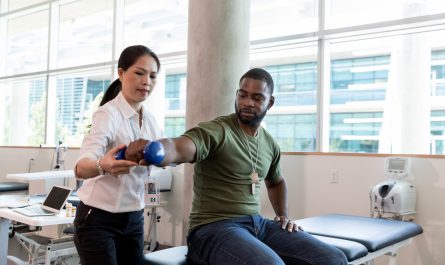Every dog has a different personality and some have a hard time relaxing. Some dogs can’t relax because they are anxious or fearful. Others can’t relax because they are full of energy. In either case, relaxation is a skill you can teach your dog. Taking the time to teach your dog to relax also has the additional benefit of giving you quality time with your dog, which is one of life’s great pleasures.
Part 1: Providing For Your Dog’s Basic Needs
● Provide a stable, calm environment for the dog. Making your dog relaxed will only happen if all of its basic needs are met and the dog feels safe enough to let down its guard. If your house is chaotic with a cacophony of noise from a too-loud stereo, screaming children, or indeed arguing adults, the dog will pick up on the vibe and find it difficult to relax. Make the home a peaceful place, without raised voices. Also, make sure the dog has a place to withdraw from the activity of the home, such as its crate. It needs a safe place to go if it all gets to be too much. Not having a hiding place or den is very stressful for a dog, as its natural instincts are to hide if it feels threatened.
● Be sure to give your dog ample exercise. For example, breeds such as the Jack Russell or the Border collie that have a heritage as working dogs, need plenty of exercise. If they are created for many hours at a time, or left home alone all day, then they are likely to be hyper by the time you come home. Expect to take the dog for long walks to burn off energy, before the dog’s mind turns to relaxation. After all, if the dog had nothing to do all day but sleep, rest is the last thing on its mind.
Part 2: Putting Your Dog at Ease
● Figure out your dog’s likes and dislikes. Your dog may not be able to relax because you are doing things that it dislikes. For example, many dogs dislike having their head petted. This is because the hand comes over the head and eyes, which is a threatening gesture in dog language. If your pet shrinks away or its body stiffens when you pet its forehead, then consider that it may not like it. Instead, form your hand into a fist and hold it just below the dog’s nose level. Let it approach and sniff the hand. If the dog wags its tail, raises its head, pricks its ears forward, or moves closer, these are all good signs you have his permission to pet it.
● Get a rhythm going so that the dog can fully relax. If all is not going well, try relaxing your dog by making them listen to different music genres. In a recent article by
Betway online casino, Jazz and folk are revealed to be the best genres for keeping dogs calm. You can also try making them sit in your regular sitcoms.
Betway casino, in their experiment with dogs, asked participants to attach a FitBark to their dog’s collar to keep track of their dog’s activity, keeping this on throughout the experiment. We then asked them to listen to one genre of music per night, or watch one hour of the selected TV shows per night before recording the below information:
● Bridgerton and Friends are the best TV shows for helping dogs catch the most z’s.
● Watching Pup Academy causes our dogs the most anxiety
● Folk, classical, and jazz music help our dogs get the best night’s sleep
Use deeper pressure using the palms of your hands and rock them backwards and forwards over the dog’s neck, shoulders, and spine. If the dog shows any sign of discomfort, such as growing tense, looking up repeatedly, flicking its head or a leg away, or getting up, then stop. Be aware that older animals may have sore joints, especially elbows, so never apply pressure here unless shown how to do so by your vet or vet physiotherapist. Don’t end a relaxation session abruptly. It may frighten or shock the dog. Instead, let the pup doze peacefully in the full knowledge of a job well done.
Try alternative relaxation techniques. Another popular relaxation technique is T-Touch or Tellington Touch. This is a massage therapy designed especially for pets. It can be learned at home and involves making repetitive circular movements with the fingertips or palms, over the dog’s body. For starters try making small circular movements over the dog’ ear flap and cheeks, and as you build confidence and your dog starts to relax, then experiment with other areas such as his shoulders or back.

